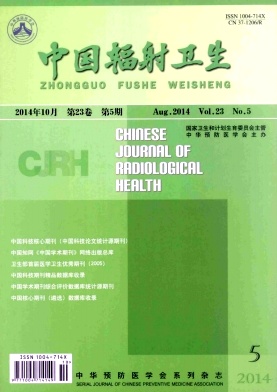PANG Zhao-xia, ZHANG Shi-cui, WANG Li
Objective Ocean University of Chinave To study the optimal protection dose of recombinant murine interleukin 12 (rmIL-12) on mice of acute radiation sickness. Methods Eighty-four BALB/c mice were given 6.0 Gy 60Co γ-rays total body irradiation and randomly assigned into irradiation control group, 5,10,20,40,60 μg/kg rmIL-12 treatment groups. Solvent and 5,10,20,40,60 μg/kg of rmIL-12 were administrated intraperitoneally 1 hour following irradiation, and was administrated every 3 days after irradiation. The general conditions of mice were observed twice a day, the changes in body weight, peripheral blood cell counts were examined once every three days, bone marrow cells were collected to perform colony cultivation on day 14 and 28 after irradiation. Results The general conditions of mice in rmIL-12 treatment group were better than those of irradiation control group. Compared with the irradiation control group, rmIL-12 treatment significantly promoted platelet recovery, resulting in less profound nadirs (13.9%~21.5% vs 8.1%,P < 0.01) and rapid recovery to normal levels,20 μg/kg was the optimal dose. WBC recovery speed in treatment groups was significantly faster than that in the control group, 20μg/kg was the optimal dose. The nadirs of HGB in rmIL-12 treatment groups were higher than that in the control group (62.9%~68.3% vs 49.9%,P < 0.01). Semi-solid bone marrow cell culture also demonstrated that rmIL-12 could stimulate bone marrow cells to form more CFU-Mix than those of the irradiation group in vitro on day 14 and 28 after irradiation (P < 0.01). 20μg/kg treatment group was better than the other treatment groups (P < 0.05). Conclusion 5,10, 20,40,60 μg/kg of rmIL-12 can significantly accelerate the recovery of hematopoietic function, especially megakaryocyte lineage, in acute radiation sickness mice. 20 μg/kg is the optimal dose.

